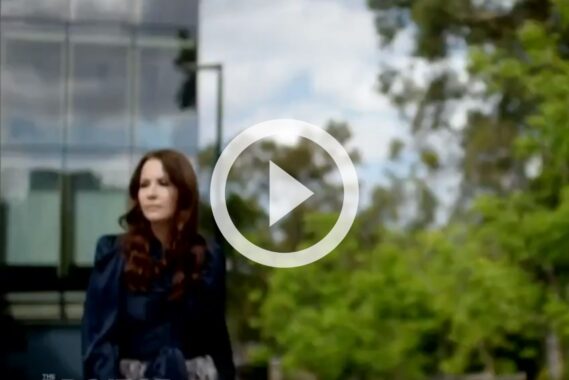Let’s put patients first
6 September 2018
by Professor Anand Deva, Integrated Specialist Healthcare
This blog post appeared first on Plastic Surgery Hub.
There has been much attention in the media about the need for tightened regulation around the practice of cosmetic surgery and medicine. This is no doubt in response to the increasing number of patients who are experiencing significant complications and the lack of proper scrutiny of the standards of training, quality and safety in this area. Added to this are looming class actions in the courts and calls for our health ministers to step in to protect Australians from “cowboys” and unscrupulous practices.
Why has it come to this?
For starters, we have experienced a tremendous increase in demand for cosmetic treatments over the last decade. The increasing number of patients presenting for cosmetic treatments are fuelled by the pervasive push from media and social media. The murky background of “influencers”, “instafame”, pay for reviews, the cult of the famous surgeon including titles like “king of boobs”, “breast master” are preying on patients that are vulnerable and insecure in their own body image. They are also giving women the false impression that by having such treatments, they will look better, feel better and have a better life. Whilst cosmetic practice is by its very nature visual, the display of patients in lingerie, bikinis and sometimes less than that – disempower women and simply reduce cosmetic surgery to a baseline of voyeuristic and demeaning images that are en par with pornography. We need to respect our patients, rather than cheapen everything to the lowest of standards.
Added to this is the increasing commoditization and commercialization of medicine. In cosmetic practice, where all treatments are elective – let’s face it, no one will die if they don’t have cosmetic surgery – the stakes are very high. The risk and harm arising from an elective cosmetic procedure, which was not really necessary in the first place is the worst harm of all as it could have been completely avoided.
What do we need to do?
First – we need to have a deep hard look at what we seek to achieve by practicing in this space. Are we truly trying to help patients? Are we working to serve the patients needs? Are we ensuring that we are practicing to the highest standards to minimize risk? These are important questions that go the heart of our motivations. I would ask each of us who work in this area to truly understand and examine why we are working in this industry. If there is any doubt as to the where you place the importance of commercial drivers, then perhaps, then my advice is to perhaps choose another line of work, well away from healthcare altogether.
Second – there is an increasing need for regulation. We simply can’t leave it to all of us to do the right thing, all the time. To that end we have seen some movement in this area, especially in the area of breast augmentation.
Here are some of the changes that have been introduced to protect patients considering breast implant surgery and ensure highest standards of safety and quality are adhered to.
- Cosmetic surgical procedures such as breast augmentation must now be undertaken in licensed premises in at least two states. I would hope this would become a national standard soon.
- All implants need to be tracked on the Australian Breast Device Registry. This is the only way we can have good data to assess outcomes in the medium to long term. Ask if your doctor is contributing to this and if he/she is not – just go elsewhere. See this website.
- I have a passion about reducing the risk of infection around breast implants. For 20 years, we have now shown the importance of minimizing the risk of infection and proven that the surgeon can control this risk by using simple and effective techniques in the operating theatre. This has shown to reduce the risk of complications and reoperation by a factor of 10. An increasing number of surgeons worldwide are taking the pledge to fight infection on implants. You can access the list here>
- All women with implants should be offered lifelong follow up. If your surgeon does not – then we have recently set up a not for profit service to have your implants checked. See this website.
- Please do not rush to book in for surgery – the practice of non-refundable deposits and a fly in and have the surgery days later is not good enough and is morally and ethically wrong. It is a form of financial coercion – cancel your procedure and lose your deposit.
- Do not go for cheap finance or raiding your superannuation to pay for elective cosmetic surgery. This is simply not a good use of your financial resources and carries considerable risk, should your treatment outcome require revision. We are seeing an increasing number of women who have no savings, no super and are in debt as a result of poor standards of treatment. If you can’t afford it, then save. There is no rush.
- Your consultation for surgery should be with the surgeon (and not with a “consultant”) and should take around 45 minutes to one hour. The surgeon should spend at least 20-25 minutes of this time discussing risks in language you can easily understand. After this, I would recommend a cooling off period of between 6-8 weeks. This is important time for you to really decide whether or not to proceed. It should be then followed up by a second (or even third) consultation prior to making the decision to go ahead.
- See through the smoke and mirrors – do not be fooled by flashy websites, instagram followers or “leading” pseudo “experts”. The best doctors do not have to advertise to get work. Best if you do some asking around through your GP or friends/family that have had treatments before. Word of mouth is the best and safest way of checking credentials and tempering expectations.
- Don’t trust what you read on patient forums and blogs – many patient stories and testimonials on the internet and chat rooms are a paid form of advertising to ensure that doctors are portrayed in the best possible light. There are even edits of bad reviews so as to ensure that negative news is buried. I would therefore take a big grain of salt with what you read and don’t put your complete trust in it. (By the way – this blog is completely free from any payments or conflicts!)
Will this be enough? Well probably not – but at least it marks a starting point. I have written before about the misleading term “cosmetic surgeon”. After all, if you go for open-heart surgery, you have faith that the doctor performing your bypass is appropriately credentialed and registered by AHPRA as a certified cardiac surgeon. There is no officially recognized title of “cosmetic surgeon” – it is simply made up. When you go in for a procedure under a “cosmetic surgeon” there is no guarantee that the doctor performing a potentially risky surgery has the necessary training, skill, certification, moral fibre and commitment to ensure that you are kept safe and free from harm. These doctors have betrayed the first rule of medicine – first do no harm Primum non nocere.
Let’s hope that the rising tide of unhappy, emotionally and physically broken patients is stemmed and that we change the culture of smoke, mirrors, pressure sales and profits to one that is more patient focused. It is this future that I would like for cosmetic practice – where we deliver true and proven benefits to patients to improve their quality of life and wellbeing. It’s about time that we #Putpatientsfirst.
If you’ve recently undergone breast implant surgery and are concerned about your implants, you can have a free breast implant check at our Macquarie Clinic. For more information and to book in, please click here.



